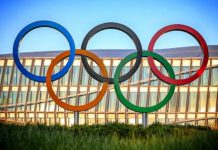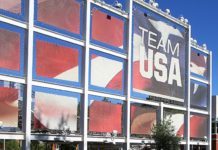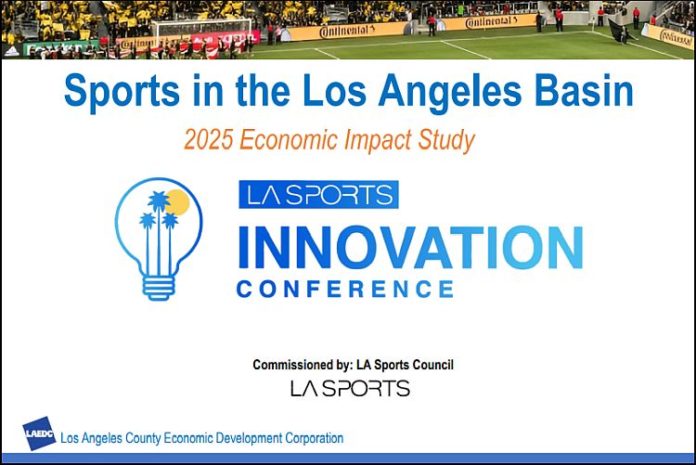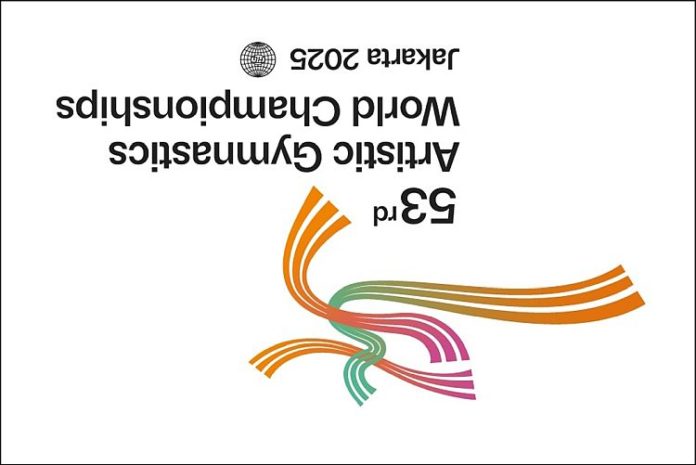★ The Sports Examiner: Chronicling the key competitive, economic and political forces shaping elite sport and the Olympic Movement.★
★ To get the daily Sports Examiner Recap by e-mail: sign up here! ★
≡ L.A. SPORTS ECONOMY SOARS ≡
In 2018, a comprehensive study of the economic impact of sports in the Los Angeles area by the L.A. Economic Development Corporation showed $6.2 billion in total economic impact, supporting 39,100 jobs and generating about $327 million in state and local tax revenues.
Then came the pandemic. And then came another boom.
At the L.A. Sports Innovation Conference held Monday at the Intuit Dome in Inglewood, California and organized by the Los Angeles Sports Council, the LAEDC presented its latest findings, showing a startling rise since the Covid-19 shutdown in 2020:
In 2021:
● $7.0 billion total economic impact
● 39,690 jobs (direct and indirect)
● $363.6 million local and state tax revenue
In 2024:
● $12.1 billion total economic impact
● 92,970 jobs (direct and indirect)
● $725.9 million local and state tax revenue
These are astonishing numbers, growing over six years by 95.2% in total and adding 53,280 direct and indirect jobs. What happened?
The biggest economic driver in the region are its fans. The report noted and offered a stunning chart demonstrating the rabid interest in sports in the area:
“Between 2023 and 2024, attendance at professional sporting events in Los Angeles increased by an average of 1.0 percent across all major teams. Football continues to anchor the region’s sports scene, with the Rams averaging 73,194 fans per game and the Chargers 69,967, both essentially filling SoFi Stadium to capacity, with the Rams again exceeding its official seating limit.
“Soccer also demonstrated strong support, with Los Angeles Football Club averaging 22,121 per game, the Galaxy increasing to more than 26,000, and Angel City FC averaging just over 19,300, reflecting the sport’s broad appeal in Southern California.
“Baseball followed closely, with the Dodgers drawing 48,657 fans per game at Dodger Stadium, the highest in Major League Baseball, and the Angels attracting 31,822 at Angel Stadium.
“Basketball and hockey teams also maintained steady support, with the Lakers averaging 18,723, the Kings 17,196, and the Ducks 15,806. The Sparks recorded the most dramatic year-over-year increase, rising from 6,554 to 11,045 per game, while the Clippers posted the sharpest decline, down 12.6 percent, reflecting the transition to the newly opened Intuit Dome, which offers a smaller seating capacity than their previous home at Crypto.com Arena.”
The accompanying chart showed that of the 12 largest pro teams in the area, eight have average attendance at 90% or better of their listed capacities, with three more over 80% and one at 71%:
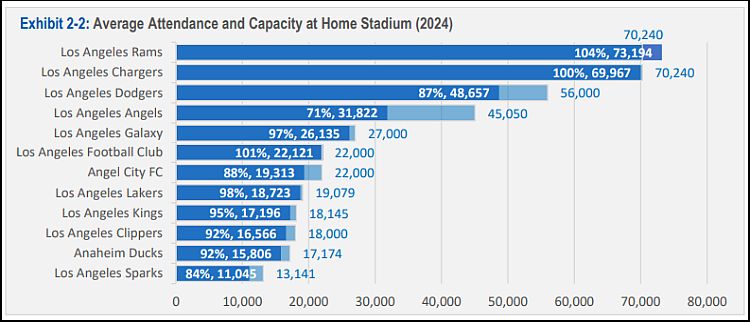
Moreover, spending on concessions, parking and merchandise is not included in the total.
These large-scale pro teams account for $10.2 billion of the $12.1 billion impact total or 84.3%, with collegiate sports – primarily UCLA and USC – accounting for most of the rest at $1.87 billion. USC was listed with $242.4 million in athletics revenue for 2024 and UCLA with $170.9 million; others ranged from $39.7 million down to $22.1 million.
Annual events also generated significant, if smaller impacts such as the PGA Genesis Invitational golf tournament, Long Beach Grand Prix auto race, the Rose Bowl, U.S. Surfing Open, Los Angeles Marathon and others, and one-time events such as the Rugby Sevens World Championships.
The LAEDC measured the impact of sporting events taking place in the area and not those in the planning stages, such as for the 2026 FIFA World Cup or the 2028 Olympic and Paralympic Games in the Los Angeles area.
LAEDC chief executive Stephen Cheung told the conference the numbers aren’t just good, they open the door to much more:
“This is really a call to action. I think for economic developers – I get excited about the data – it’s not so much about the data, but about the narrative and the story. We don’t tell that story enough; other folks are telling the story for us.
“So we basically have to let folks know that we’re one of the top two sports-entertainment sector [locations] in the entire world, and because of that, we need to take our rightful place on the national and international stage, owning the development of that and turning this into business opportunities and job opportunities for our communities as well.
“So, this is a way of asking all of you to start getting the data, creating your own narrative and your story, so when our international partners are coming, so they can call you and we have a lot of these amazing stories about new technology, new companies, new work, new sports teams are coming through, so we can showcase to the rest of the world how great L.A. is.”
He noted that the New York-New Jersey area is top-ranked, but he pointed out that takes in activities across two states. Cheung sees L.A. as no. 1 and said the data “momentum positions Los Angeles as the global capital of sports and innovation.”
¶
★ Receive our exclusive, weekday TSX Recap by e-mail by clicking here.
★ Sign up a friend to receive the TSX Recap by clicking here.
★ Please consider a donation here to keep this site going.
For our updated, 850-event International Sports Calendar for 2025, 2026 and beyond, by date and by sport, click here!





